Spread over 24 square km, the ancient city of Hampi on the banks of the gushing Tungabadra River, is a feast for your eyes. Large boulders perched precariously over undulating hills, intricate temples and monuments indicating a rich heritage and history, and a topography that is at once awesome and daunting. Hampi is everything you image it to be, and a whole lot more. The 600 year old capital city was one of the most populated in its time and also one of the richest. The old excavated bazaar sites indicate trade with peoples from Europe, Arabia and East Asia, motifs along the walls and architectural styles indicate the richness of the Vijayanagar Empire, and the sheer scale of the city has a million stories to tell.
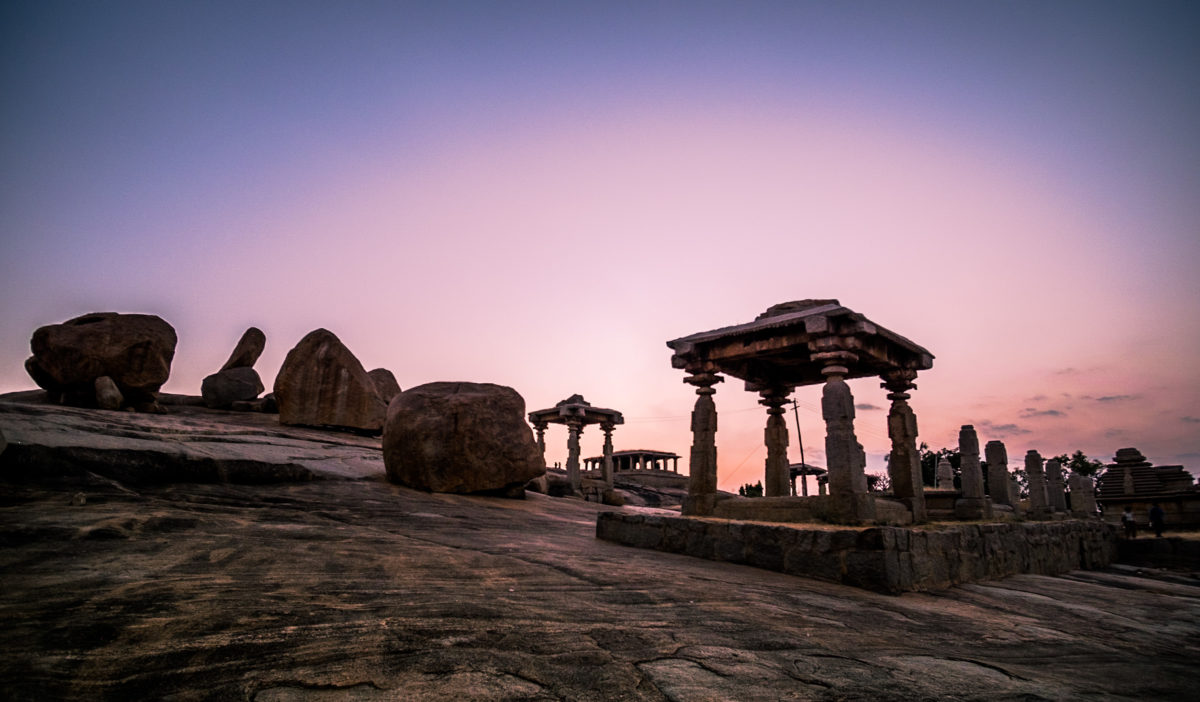
Getting to Hampi – Hampi is easily accessible by the (overnight) Hampi Express train from Bangalore, which has a well connected International airport. If you are planning to visit from October-March, which is peak season, we suggest booking your train tickets early. Remember to book trains to Hospet, the name of the station, located about 15 km from Hampi city.
Where to Stay – On being declared a UNESCO World Heritage site, much of the famous Hampi Bazaar backpacker zone was demolished, as they were too close to some of the ruins. While many cheaper options to stay and backpacker home stays have moved across the river, the main bazaar still has a few home stays and rooms. The east side however now has plenty of cheap and mid range options, many of which are cozy and comfortable with funky Goa style cafes. If you are looking for a hotel option, there are a few along the station road in Hospet with the Royal Orchid being one of the best. The most upmarket resort in the area is Boulders, and while it is about 20km from the ruins, it offers a whole experience and worth looking into if money is not an issue.
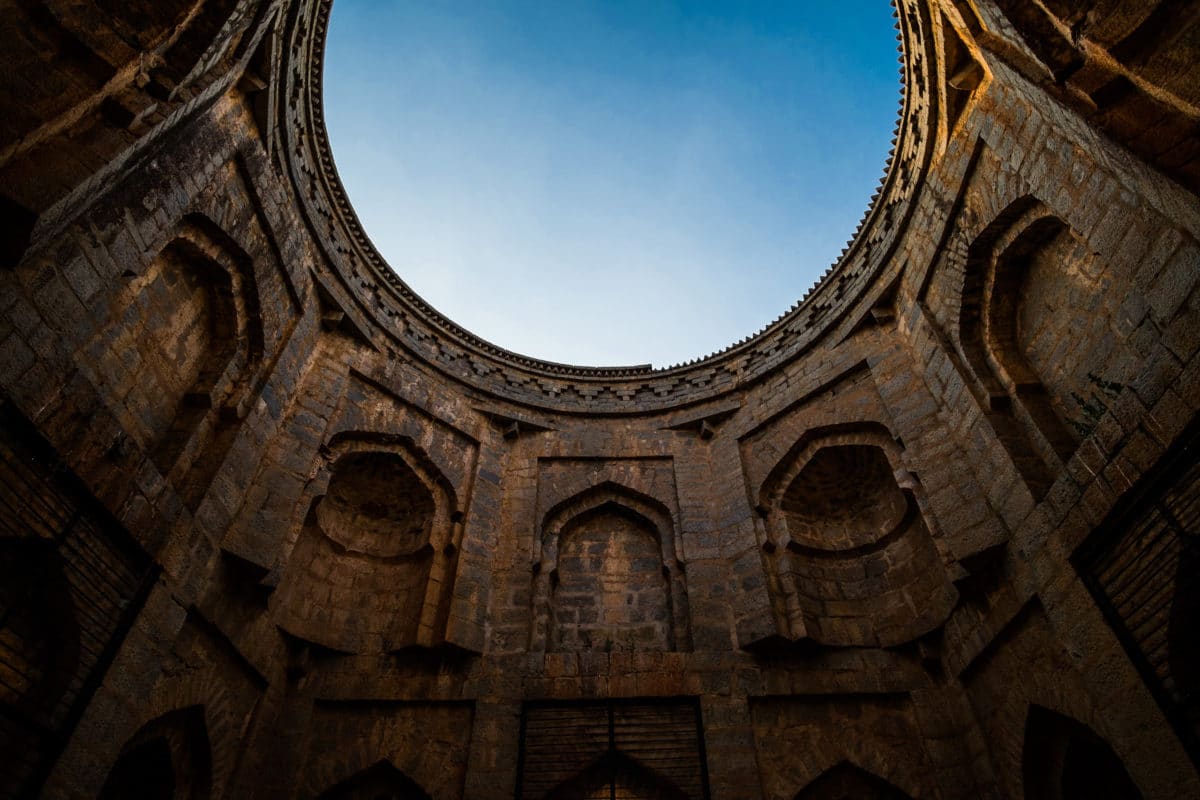
How to plan your time in Hampi – We suggest 3 days as an optimum time to enjoy and take in the vastness of the ruins, (it can be done in two days if you’re a trooper) though the uniqueness and essence of Hampi easily calls for several days of wandering if time permits. All the monuments shut by 6pm, and while many don’t have gates or enclosures, there are plenty of guards that are stationed about.
Hampi can be roughly divided into three main zones, by our estimate, for optimum viewing and some downtime. Many of the temples and monuments are detailed and intricate and can be overwhelming if rushed.
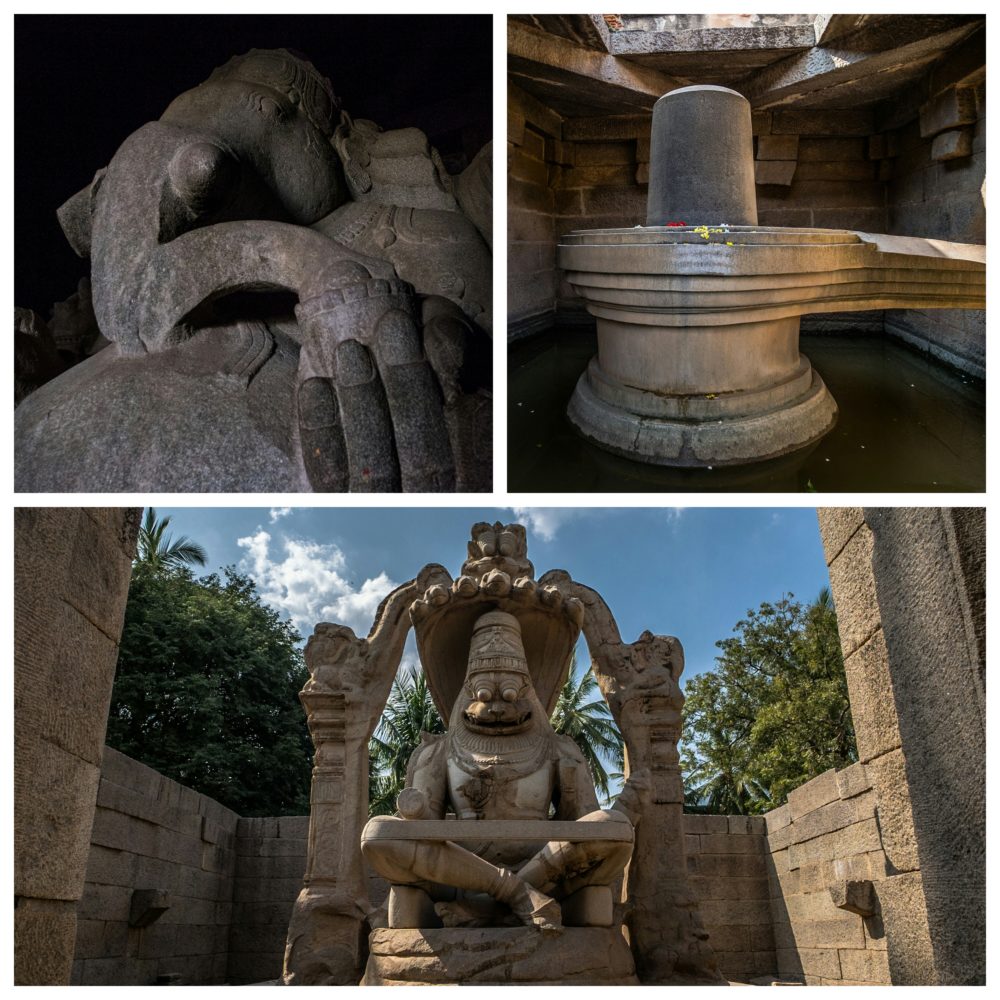
Zone 1 – this includes the famous Hampi bazaar with its cafes and backpacker enclaves, the Hemakuta Hill area which affords amazing views, the monolithic Nandi Statue and the functioning Virupaksha Temple. We suggest doing this on day 1, as it gives you an idea of what to expect and the sheer scale of the city. It also gives you the chance to orient yourself to the layout of the ruins and the pace you set yourself.
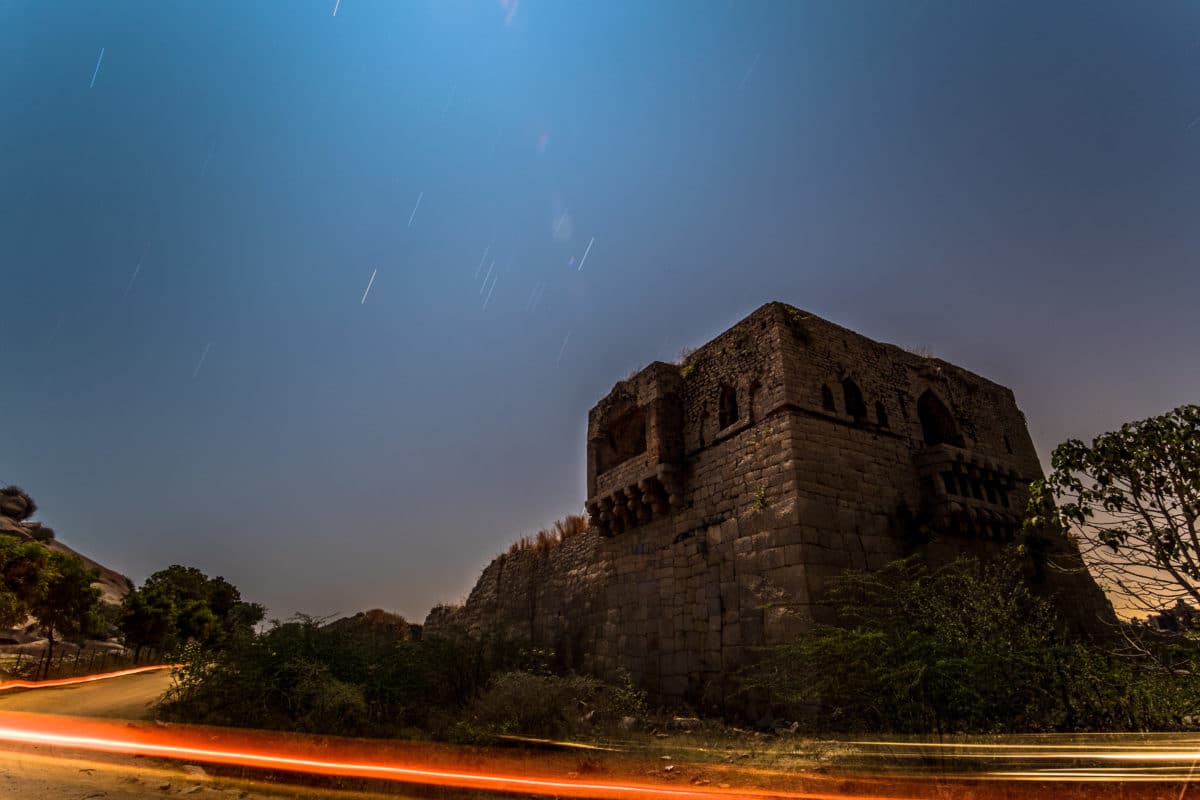
Zone 2 – The Royal Quarters, Archeological Museum and surrounding structures. While these mostly involve walking amongst excavated sites, the still standing elephant stables, Islamic influences in the Queen’s Bath and Zenana Quarters, the Lotus Mahal amongst others are incredibly beautiful and require time to examine and understand the royal way of life. We suggest visiting the Archeological Museum first, as it has an excellent model of the Royal Enclosure as well as the entire city of Hampi. The museum also gives you a bit of history and helps to put the old dynasty into perspective.
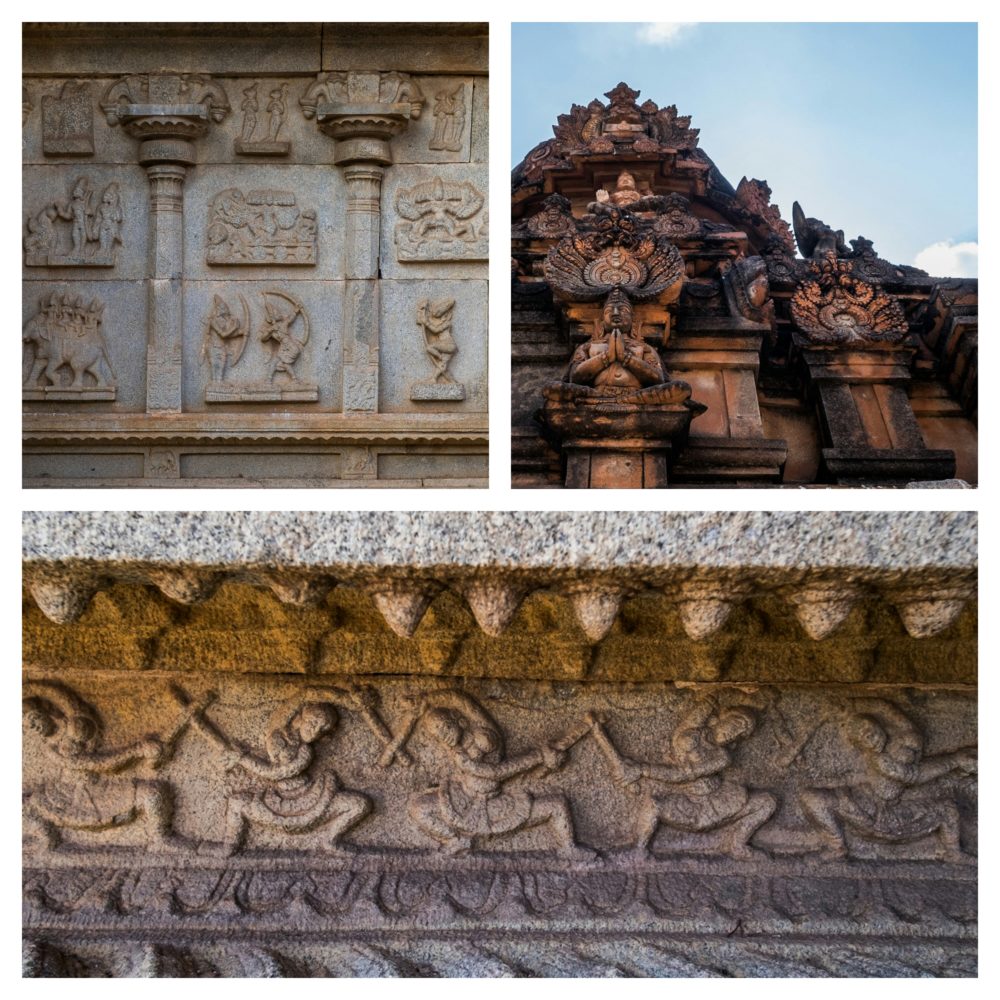
Zone 3 – The famous Vitthala Temple Complex with the oft photographed iconic stone chariot, and the wondrous musical pillars. About 7km away from the bazaar area, the whole complex takes about 3 hours depending on your pace. The Hazara Rama Temple Complex is another artistic wonder with a thousand carvings depicting scenes from the Ramayana.These can be clubbed with Zone 1 or 2, if you are ambitious and don’t mind wandering about in the heat, or if time is short.
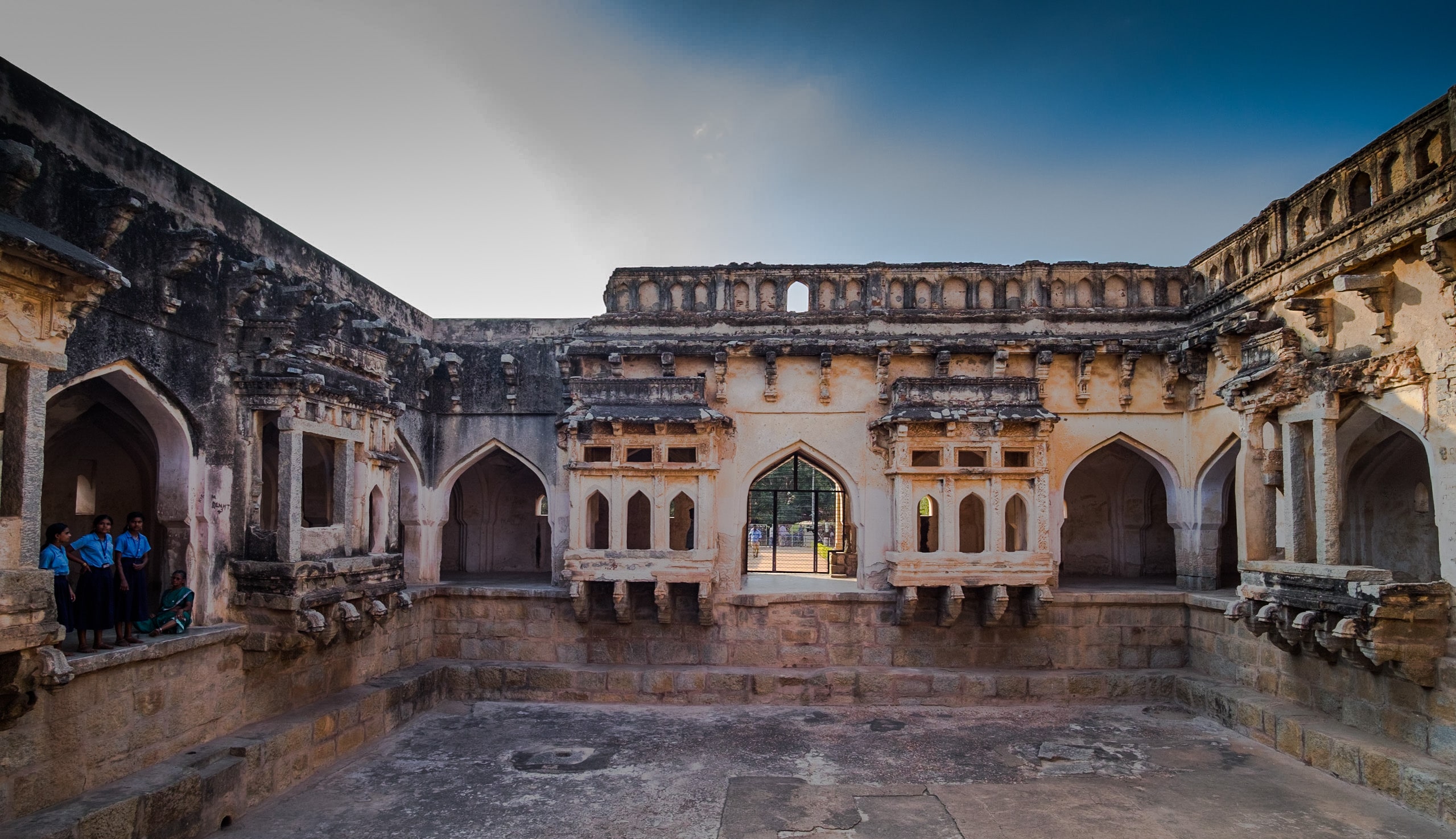
Everything Else – Once you have completed the main attractions, there are hundreds of other smaller structures and ruins spread out which can be explore at a leisurely pace on foot or on bicycle, depending on the time you have. We definitely suggest spending a leisurely few hours lazing in the chilled out backpacker cafes by the west side of the Tungabhadra. There are ferry boats and coracles that will take you across the river for Rs. 10/- (runs every half hour till 5:30pm) If you fancy a short hike, you can climb the 650 odd steps upto the temple perched on the top of the Annegudi hill, considered the birth place of Hanuman, which has great views of the surrounding countryside. You can also plan a visit to the popular Matanga Hill during sunset, because no popular tourist place in India is complete without a sunset point.

Moving around Hampi – Depending on your enthusiasm and abilities, Hampi can be navigated by foot, bicycle, auto rickshaw and car. If you are staying on either bank of the river in the bazaar area, Zone 1 can easily be done by foot and Zone 2 by bicycle. Zone 3 would require the use of three or four wheels. Even in December it can get rather hot in the day, so keep that in mind while planning your day. The Museum and the ASI office have maps that can be bought and are fairly useful to planning your time exploring the ancient city of Hampi.
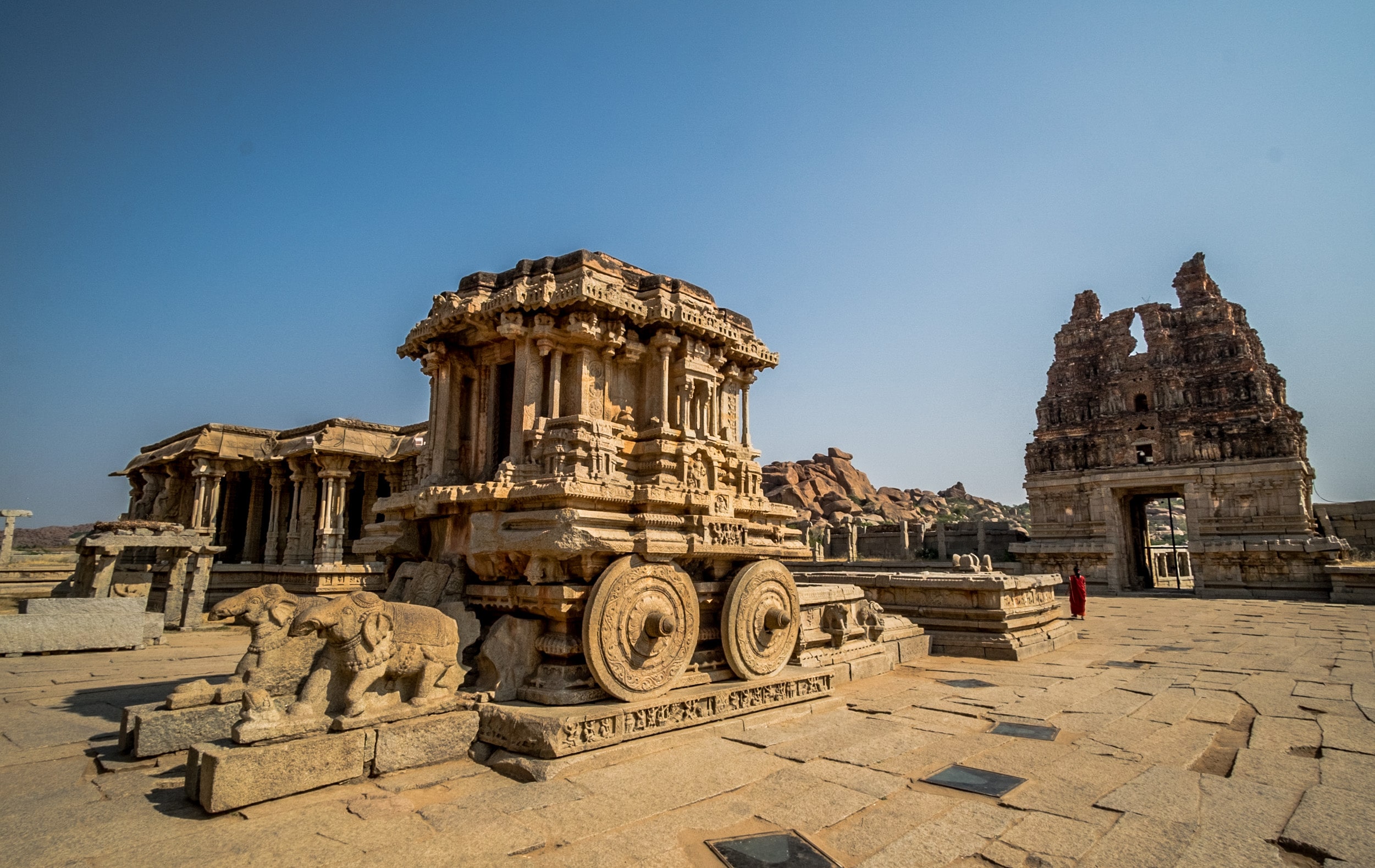
This is wonderful, was planning a trip to Hampi with a friend so this really helps.
Glad you found it useful.. 🙂 Let us know if you have any specific questions, would be happy to help if we can.